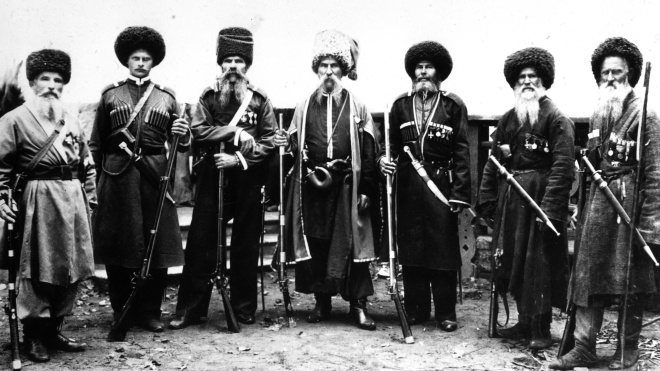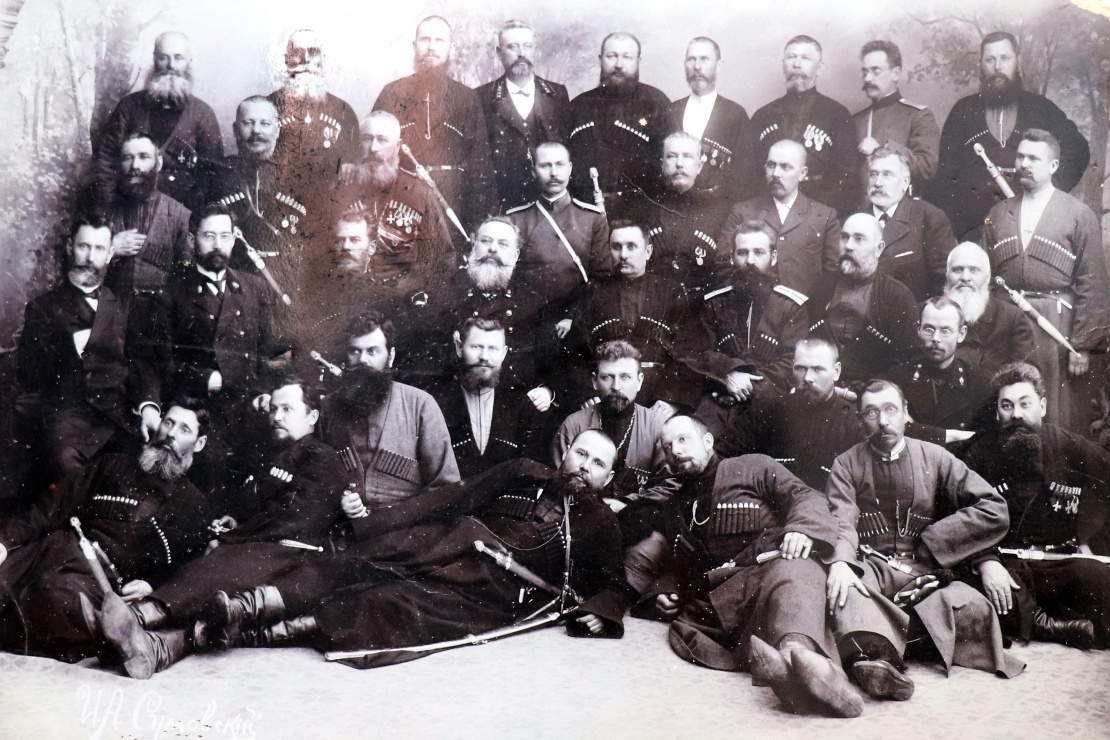Up to XX century Kuban maintained close historical and cultural ties with Ukriane. Everything is simple here. At the end of the 18th century the Cossacks of the Black Sea army, which was formed from the remnants of the Zaporozhian Sich, were resettled in the Kuban. And in XIX century, peasant settlers from Dnipro, Sloboda, Chernihiv and other Ukrainian regions appeared here.
In the mid-1910s, about 1.4 million Cossacks, about 1.6 million peasants lived in Kuban, the rest of the population were representatives of the Caucasian mountain peoples. More than half of the Cossacks and peasants were Ukrainians. In the second half of the XIX century, in Kuban, the rise of the Ukrainian national movement began, which fought for its cultural and political rights.
After the February revolution of 1917 that resulted in the elimination of the monarchy, national movements began to rise in various regions of the former Russian empire.
In Kuban, everything happened roughly according to the Ukrainian scenario. In March 1917, the Ukrainian Central Rada was created in Kyiv, and in April-May, at the Cossack meeting, Kuban created their own representative body — the Cossack Military Rada.
In September, Military Rada on their 2nd session replenished with members from the mountain peoples and representatives of the non-Cossack population. During this session, Military Rada renamed Kuban oblast into the Kuban Krai (Kuban Territory) with the capital in Yekaterinodar and adopted the Constitution according to which the government of the Kuban Krai and Parliament — the Kuban Legislative Rada were created. The parliament elected the government and the ataman, who was the commander-in-chief of the military forces of Kuban, and also had the right to veto laws that the parliament adopted.
Members of the State Duma from the Kuban Cossacks, 1907. There are several future politicians of the Kuban Peopleʼs Republic among them: Fedor Shcherbyna (3rd row from the top, 5th from the left) and Kondrat Bardyzh (3rd row from the top, 6th from the left).
The most influential political forces of the Legislative Rada were two Cossack factions: the pro-Ukrainian "Black Sea Cossacks" and the pro-Russian "Caucasus Line Cossack". But the struggle between them did not go beyond the parliamentary one, during the discussions they managed to find a compromise, and all decisions were recognized by both factions. To some extent, they even balanced each other. For example, Aleksander Filimonov, a line cossack, was chosen as the first ataman, and Nikolai Riabovol, a Black Sea cossack, became the head of parliament.
It was Riabovol, along with other influential Kuban "Black Sea" politicians, who advocated the sovereignty of Kuban and the establishment of ties with Ukraine. On his initiative, representatives of the Central Rada were invited to the meeting of the Military Rada on September 24, 1917, who were greeted in Ukrainian: "Dear guests! The stepmother-fate tore our grandfathers of the Zaporizhian Cossacks from the motherʼs womb and threw them to Kuban. came to life and, like faithful children of our Mother, we follow the path that she indicated, we go where love between people already sparkles, where a free union of free peoples awaits us too".
Cossack troops in parade at Ekaterinodar, beginning of 1920.
Like the Central Rada, the Kuban parliament first announced the creation of the Kuban Peopleʼs Republic (KPR) as part of the Russian federal state. Then, in October 1917, the Bolsheviks staged a coup and actually unleashed a civil war. It became clear that there would be no federation. Therefore, at the beginning of 1918, following the Ukrainian Peopleʼs Republic (UPR), the Kuban Peopleʼs Republic declared independence.
During the existence of the Kuban Peopleʼs Republic in 1917 — 1920 there were at least three attempts to unite with Ukraine either on the basis of autonomy or in the format of a federation. The Kuban parliament made its first attempt a few days after declaring independence from Russia on February 16, 1918.
Even if the Black Sea faction managed to win over the parliament, the situation with the peasant population was much worse. Since the tsarist times, the Cossacks had certain privileges and benefits. One of the main ones was the right to purchase land. The peasants could only rent it from the Cossacks. Because of this, the these classes developed hostility towards each other, and marriages between them were very rare and, as a rule, are not approved in society.
Life of the Kuban Cossacks, 1880s.
Bolsheviks played on this exact "class hostility". The Kuban peasantry was promised land, so there were many Ukrainian peasants among the volunteers of the Bolshevik army in Kuban. At the end of February 1918, the KPR government had to leave Yekaterinodar under pressure from the Bolsheviks.
One could not count on the help of the UPR; in January 1918, the Central Rada itself was forced to evacuate from Kyiv captured by the Bolsheviks. And Kubans had to make an alliance with the White Guard Volunteer Army, led by Russian monarchist officers. By the summer of 1918, by joint efforts, they drove the Bolsheviks out of Kuban.
At that time, the government of the KPR made a new attempt to unite with now Ukrainian State of Hetman Pavlo Skoropadskyi, who came to power with the support of German troops and dissolved the Central Rada. A Kuban delegation headed by Riabovol arrived in Kyiv. They agreed to unite on a federal basis, but most importantly, they developed a plan for a military landing on the Kuban.
Hetman Pavlo Skoropadskyi with his officers, 1918.
But the operation was never carried out, partly because of the indecisiveness of Skoropadskyi, but mainly because of the opposition of the White Guards, led by Anton Denikin. He, of course, was against the unification of Kuban with Ukraine. But at first he did not openly interfere in the activities of the KPR government, because the Kuban divisions formed the basis of the Volunteer Army. The White Guards tried to split the Kuban parliament and strengthen the positions of the pro-Russian faction of the "Caucasus Line Cossack".
But Ukrainian-Kuban relations continued. At the end of 1918, after the anti-Hetman uprising, the Directorate of the UPR came to power. In December 1918 — January 1919, the delegations of the UPR and the KPR went to the Paris Peace Conference, where the political structure of the world was decided after the World War I. It was not possible to achieve recognition of the Ukrainian state there.
Map of territories claimed by the Ukrainian Peopleʼs Republic at the Paris Peace Conference following World War I, 1919-1920.
During the summer — autumn, the conflict between the Kuban Republicans and the white monarchists intensified. Denikin was unable to install his proteges in the KPR government, so he moved from politics to force. On his orders, Riabovol and several other influential “Black Sea Cossacks” were killed, and the Ukrainian embassy was destroyed in Yekaterinodar. After that, the Kuban Cossacks began to desert en masse from the Volunteer Army. As a result, the victorious campaign against Moscow failed, and the Bolshevik Red Army went on the offensive in the southern direction and on March 17, 1920 captured Yekaterinodar again.
Anton Denikin on the day of his resignation from the post of commander-in-chief of the White Guard army, April 4, 1920.
In the spring of 1920, under the onslaught of the Bolsheviks, the troops of the Directory also retreated. The governments of the UPR and the KPR were forced to emigrate. During this period there was the last attempt to conclude at least some kind of alliance. In August 1920, representatives of both governments signed an agreement on mutual support in Warsaw. But due to the political circumstances of the time, it was even more symbolic than the two previous attempts.
Kuban Cossacks in the White Guard Army, October 1919.
At that time, in Kuban, the Bolsheviks launched a large-scale terror against the Cossack class, which they declared "class enemies" and massively deported them from the region with their entire families. In the early 1930s, Kuban, like Ukraine, suffered forced collectivization, which escalated into Holodomor (Terror-Famine). In some Kuban stanytsias, up to 80 percent of the population died of starvation. And in their place, the Soviet government brought peasants from the central regions of Russia. But despite all this, Ukrainian cultural traditions are still preserved in Kuban.
We honestly and objectively tell about the events of Ukrainian history. You can support "Babel" right here .
An ironic poster about the events in Ukraine amid the Paris Peace Conference. It depicts the attempts of foreign conquerors to divide Ukraine into pieces. Published in Vienna in 1919 by Christoph Reisserʼs Söhne.
Translated from Ukrainian by Yulia Pryimak .


